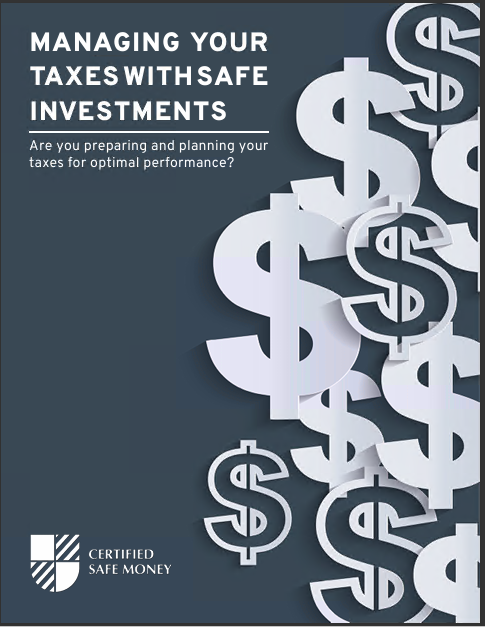Key Takeaways
-
Annuity rates in 2025 are shifting quickly, requiring both retirees and advisors to track changes closely to avoid locking into less favorable contracts.
-
Staying informed about interest rate trends, inflation, and tax implications is essential to ensure your annuity aligns with your long-term retirement security.
A Fast-Changing Retirement Landscape
You are stepping into retirement planning during a period where annuity rates are moving faster than many people expect. In 2025, shifts in interest rates, inflation adjustments, and new tax laws have made it more difficult to settle on the right annuity at the right time. The speed of these changes often outpaces how quickly retirees and financial professionals can evaluate options.
Instead of thinking of annuities as a static decision, you need to approach them as a financial product that evolves rapidly with the market. What looked like a strong choice in early 2024 may not look as favorable now, and what seems competitive today may lose its edge within months.
Why Annuity Rates Are Changing So Quickly
Several forces are driving the faster pace of change in annuity rates:
-
Interest Rate Adjustments: The Federal Reserve continues to refine interest rate policies in 2025, directly influencing the returns insurance companies can promise on annuity contracts.
-
Inflation Trends: Inflation spiked in previous years, and while it cooled somewhat by 2024, the ripple effects are still influencing contract structures and payout options in 2025.
-
Longevity Expectations: As life expectancy data shifts, insurance providers are adjusting payout structures to account for longer retirement periods.
-
Market Volatility: Investment portfolios backing variable annuities face heightened volatility, making insurers more cautious in rate setting.
The Impact on Your Retirement Income
When annuity rates rise or fall quickly, it directly impacts the income you can expect in retirement. A small percentage change in the annuity payout rate can translate into thousands of dollars over a 20- or 30-year retirement horizon.
This makes timing crucial. If you lock in during a downturn, you may end up with lower monthly payments for life. On the other hand, waiting for rates to climb carries the risk of missing out on guaranteed income during the waiting period.
What You Need to Track in 2025
To avoid being caught off guard, you need to actively track the following factors:
-
Federal Reserve Announcements: These influence both short-term and long-term yields, which shape annuity rates.
-
Inflation Data Releases: Monthly and quarterly reports on consumer prices affect cost-of-living adjustments tied to some annuities.
-
Legislative Changes: New tax treatments and regulatory adjustments can change how your annuity income is taxed.
-
Longevity and Mortality Tables: Updates in actuarial assumptions can shift annuity pricing models.
By monitoring these signals, you can better understand when it might make sense to secure a contract.
Timing Your Annuity Decision
In 2025, timing is less about waiting for the “perfect moment” and more about balancing opportunity against security. You should ask yourself:
-
Do you need guaranteed income immediately, or can you delay in hopes of better rates?
-
Are you comfortable with the possibility of lower lifetime income in exchange for locking in sooner?
-
How do changing interest rates align with your other retirement investments?
Many retirees now choose to stagger their annuity purchases. By spreading purchases across different time periods, you reduce the risk of locking in at one unfavorable rate.
The Role of Taxes in a Fast-Moving Market
Tax rules have an added layer of complexity in 2025. Annuity income is still taxed as ordinary income, but changes in tax brackets and deduction limits can alter your overall liability. Additionally:
-
Required Minimum Distributions (RMDs) still apply when annuities are held within tax-deferred retirement accounts.
-
Withdrawals before the age of 59½ continue to face penalties in most cases.
-
New tax proposals may influence the way annuities are reported and taxed in the coming years.
Ignoring the tax implications of a changing annuity environment could leave you paying more than necessary.
Inflation and Its Effect on Annuity Payments
Although inflation moderated somewhat in 2024, 2025 still brings uncertainty. Inflation-indexed annuities promise adjustments to payments, but the cost of buying these products often rises when inflation concerns increase. You need to weigh whether the extra cost is worth the protection against future price increases.
For fixed annuities, inflation erodes purchasing power over time, making a payout that feels secure today potentially inadequate 15 years down the line.
Comparing Fixed and Variable Options
When rates move quickly, the trade-offs between fixed and variable annuities become sharper:
-
Fixed Annuities: Offer stability, but locking in during a low-rate period can permanently limit your retirement income.
-
Variable Annuities: Allow growth potential tied to markets but carry more risk in volatile conditions.
-
Indexed Annuities: Aim to capture market growth while protecting against downturns, but rate caps can limit upside during market rallies.
Understanding these distinctions is key to making sure your annuity aligns with your personal risk tolerance.
The Challenge for Financial Advisors
Even professional advisors are challenged in 2025 by the pace of change. They must evaluate product offerings more frequently than in past years and adjust recommendations based on weekly or monthly data rather than annual projections.
This creates a situation where you need to remain engaged with your advisor, ensuring your retirement plan is reviewed regularly rather than only once a year. If you only revisit your plan annually, you risk missing opportunities or falling behind market changes.
How to Stay Ahead of Rate Movements
Here are some steps to help you stay proactive:
-
Schedule Quarterly Reviews: At minimum, review your annuity options every three months in 2025.
-
Diversify Income Sources: Do not rely solely on annuities; consider Social Security, pensions, and investments.
-
Stay Informed About Legislation: New bills and policies can reshape retirement tax planning overnight.
-
Use Laddering Strategies: Spread annuity purchases over multiple years to balance rate risk.
By staying engaged, you maintain flexibility even in a fast-moving environment.
Making a Confident Decision in 2025
Annuities remain a valuable tool for creating lifetime income security, but the speed of change in 2025 means you cannot treat them as a one-time decision. Careful monitoring, regular reviews, and flexible planning are the best defenses against being caught in an unfavorable contract.
When you take a proactive approach, annuities can still provide the stability you need while adapting to shifting market realities.
Finding Security Amid Rapid Shifts
In today’s market, the biggest mistake is assuming annuity rates will remain steady long enough for you to act on autopilot. You need a deliberate strategy that accounts for inflation, tax changes, and shifting interest rates. By staying informed and working closely with a licensed financial professional listed on this website, you can create a retirement plan that remains resilient, no matter how fast the annuity market moves.












